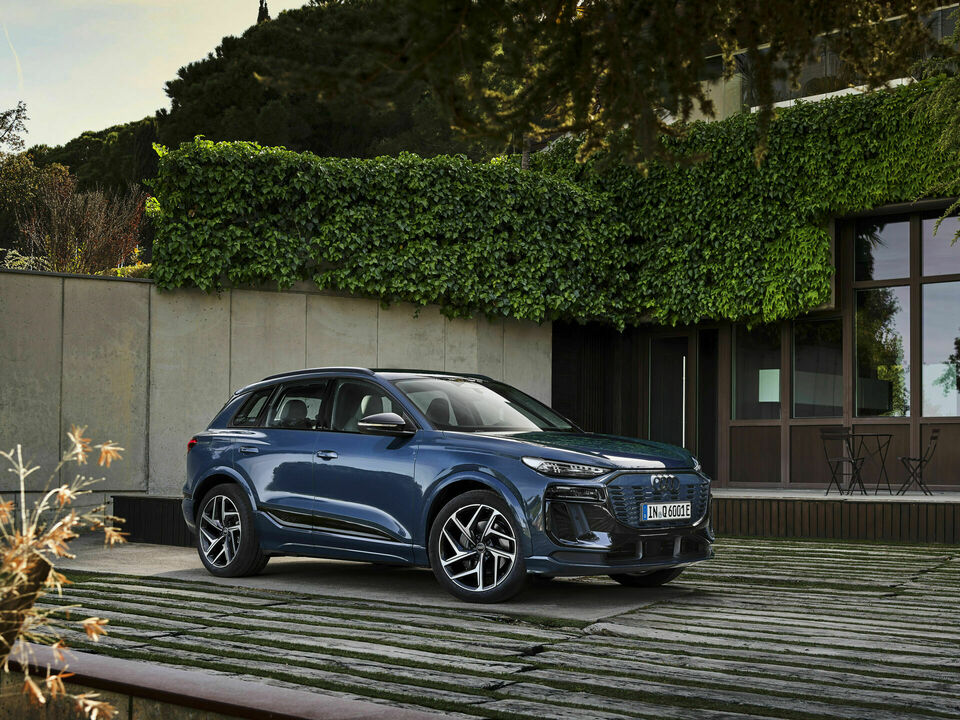
Audi Q6 e-tron: a Luxury EV with 381 Miles of Range
The Audi Q6 e-tron fills the gap between the Q4 e-tron and the Q8 e-tron. Built on the VW Group PPE platform, shared with the Porsche Macan EV, the Q6 e-tron promises to deliver decent performance and tech.
Introduction
With 381 miles (625km) of range, Audi Q6 e-tron has the most range of any production Audi EV. In addition to 300+ mile range, the Q6 e-tron has a high-performance version, the SQ6, which can accelerate from 0 to 100 km/h in just 4.3 seconds. Built on VW Group’s PPE (Premium Platform Electric) platform, the Q6 e-tron will be a less expensive alternative to the new Porsche Macan EV built on the same platform. Indeed, the Q6 e-tron's position as a more affordable option mirrors that of the Audi e-tron GT, a less expensive alternative to the Porsche Taycan. Although the Q6 e-tron offers impressive range and performance, it falls short on some interior materials that is not associated with an Audi.
Dimensions (Perspective)
The Q6 e-tron boasts dimensions of 4771mm (188") in length, 1,993mm (78.5") in width, and 1648mm (64.8") in height. In comparison to its relative, the Macan EV, the Q6 is 13mm (0.5") shorter, although it may appear longer in images due to its 2899mm (114") wheelbase and roof that does not slop down as aggressively as the Macan’s. The Q6 e-tron's increased width and height, when compared to the Macan EV, might influence its Cd value of 0.27 (versus the Macan EV's 0.25). However, Audi's priority remains providing a luxurious experience for its occupants while still delivering satisfactory performance.
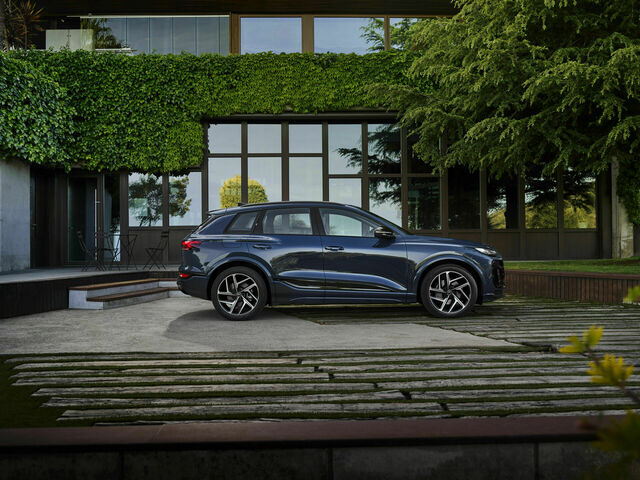
When pitted against its gasoline-powered counterpart, the Q5, the Q6 e-tron is 99mm (3.9") longer, 100mm (4") wider, and 7mm (0.3") lower. As a purpose-built electric vehicle, the Q6 e-tron is designed to offer more spacious and comfortable accommodations than its internal combustion engine (ICE) counterpart.
Interior
On the inside, the users are greeted with dual curved OLED screens which run on Android Automotive OS. The driver’s screen is 11.9” while the main infotainment screen is 14.5”, by no means small. The curved display is angled towards the driver, making it easier to reach the edges of the infotainment screen. The infotainment screen controls most of the car's functions, even the air conditioning whose controls permanently displayed at the bottom of the screen for easy access. However the curved screen will be an inconvenience for the front passenger due to its curvature despite being a better angle for the driver. According to Autogefuhl, the front passenger will have to lean towards the driver to adjust the air conditioning or radio. There is an optional 10.9” screen for the passenger that would solve the problem, however it seems to be an afterthought. A flat screen layout would have made the controls more accessible for both the driver and front passenger.

Above the screens, there is ambient lighting that goes around the dash and onto the front doors. Drivers will appreciate the heads-up display that will have navigation integrated into it along with displaying speed. Moving down the curved screens, there are some physical buttons for the drive select, hazard lights, plus there is a knob for volume control which is a miss on a lot of cars with capacitive buttons.

The hexagonal four-spoke steering wheel is leather-wrapped and features capacitive touch buttons. Unlike traditional buttons, these capacitive buttons have a single panel that depresses with a clicking sound when pressed, providing some feedback. These capacitive buttons find their way onto the switches to adjust the wing mirrors, seat memory, and lock and unlock functions. However, physical buttons are much better to operate especially on the move, capacitive buttons can be finicky and overly sensitive. Lastly, there are paddle shifters behind the wheel to adjust the regen braking. Speaking of braking, this is the first EV from Audi that will be able to drive with one pedal because the car can come to a complete stop using regen.
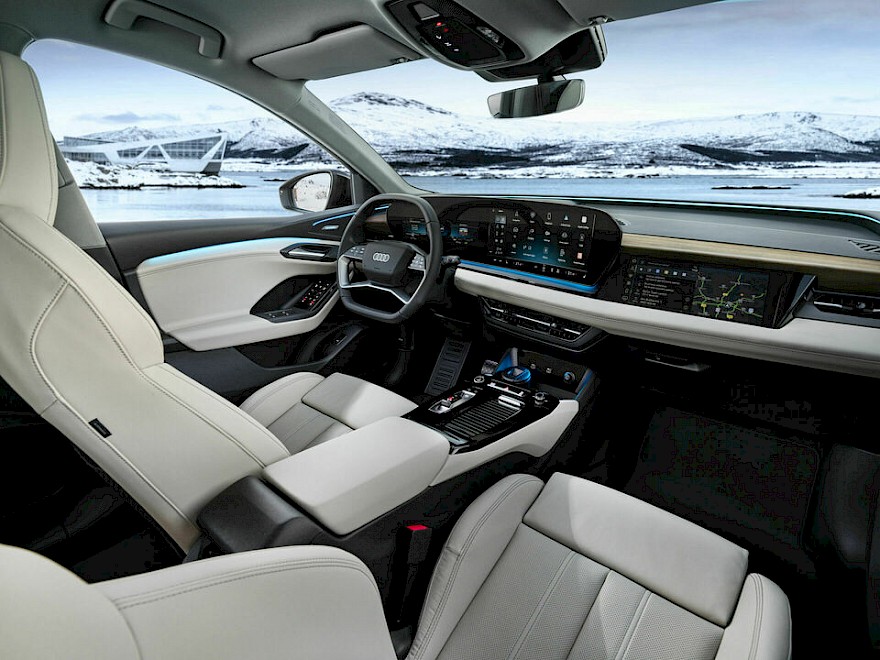
At the back, there are some trim pieces that seem to be out of place in contrast to Audi standards. According to Autogefuhl, the plastic on the top half of the door is hard which is not befitting of a car that will cost in the range of $70,000. Plus the absence of felt lining in the door pockets is uncharacteristic of a luxury EV. Unfortunately, the hard plastics look out of place around the rear AC vents, as do the fixed cupholders in the arm rest which should have been pull out units as seen on other Audis. These absences and misses maybe minor, however these small elements help enhance the premium appeal of any luxury car.

However, comfort is where the Q6 begins to excel with the seats and space at the back that are hard to fault. Unlike conventional EVs which have a knees-up position due to the battery pack underneath the floor that compromise thigh support, the Q6’s seats have good thigh support and there is space below the front seats to stretch your legs on long hauls. The sunshades on the Q6’s rear windows further pamper the occupants along with heated rear seats, something customers in chauffeur driven markets will appreciate.
Exterior
The Q6 e-tron’s stance is easy to the eye for someone not used to contemporary EVs yet. With its long bonnet, octagonal fake grille, and traditional pull-out door handles, it retains a sense of familiarity from its gasoline SUV counterparts. At the front, the optional customizable Matrix LED daytime running lights offer eight distinct designs to choose from. Additionally, these adaptive lights follow the direction of the steering wheel for better visibility. Yes, they will come with high beam assist that will dim the headlights to avoid blinding an oncoming vehicle. However due to US regulations, these lights may not be available on the US version. The main headlight module is positioned below the daytime running lights. Like the Porsche Macan, the Q6 e-tron has vents in the lower half which open for battery cooling.
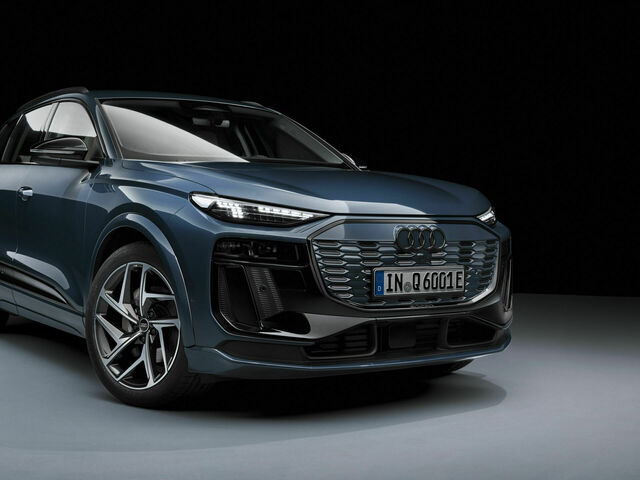
However, there are a few elements at the front that are not appealing, personally. Starting with the front grill, it is too busy and it is not particularly pleasing especially when appreciating cleaner grills from Audi’s gasoline vehicles. The front could have been more exciting without the fake front grill that could have been cleaner. Unlike gasoline Audis, the Q6 e-tron has a 64L frunk/froot that will come in handy to store more than your charging cable.

From the side, I do appreciate Audi’s approach of not being predictable with two creases at the front and the rear. Although these creases do not meet, it is a refreshing departure from Audis to have one clean line from the front to the rear. Lower down, there is some black cladding on the lower half of the door, at the same height as the battery pack, a subtle touch there. A thoughtful addition is the charging port on both sides. Only the left side will have the CCS connector for Level-3, DC fast charging. Upon removing the charging gun, the charging flap will close automatically, a neat touch. There is no confirmation from Audi about when the Q6 e-tron will come with a NACS connector that will make Tesla Superchargers accessible to Audi’s EVs.
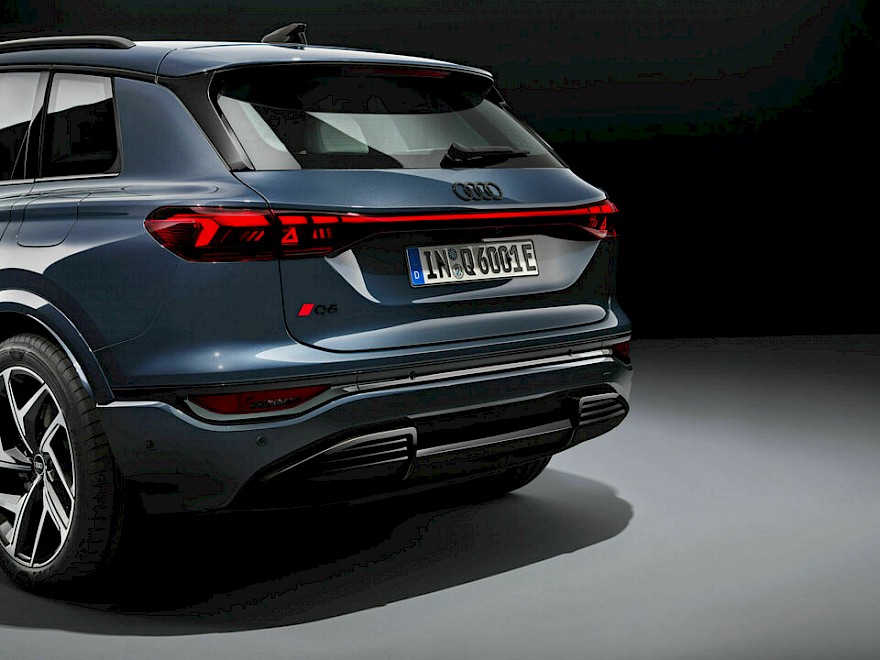
My favorite element of the entire car is the optional OLED taillights which are customizable like the headlights. It has animations, for instance when the hazard lights are on, it will show a small triangle to warn vehicles behind, neat. Furthermore they have welcome and good bye animations. The taillight design is reminiscent of the ones on the E-Tron GT which enhances the premium appeal of the car.
Battery Pack, Range, Performance, and Charging
At launch, the Q6 e-tron will come with one motor on each axle and Quattro (all-wheel drive) as standard. The standard Q6 e-tron will have a peak output of 382 horses and 591 Nm (436 lb-ft) of torque good enough for 0-100kmph sprint of 5.9 seconds. In contrast, the SQ6 will produce 483 horses. With launch control the electric motors will make an additional 27 horses to log a 100 kmph (62.5mph) from a standstill in 4.3 seconds.
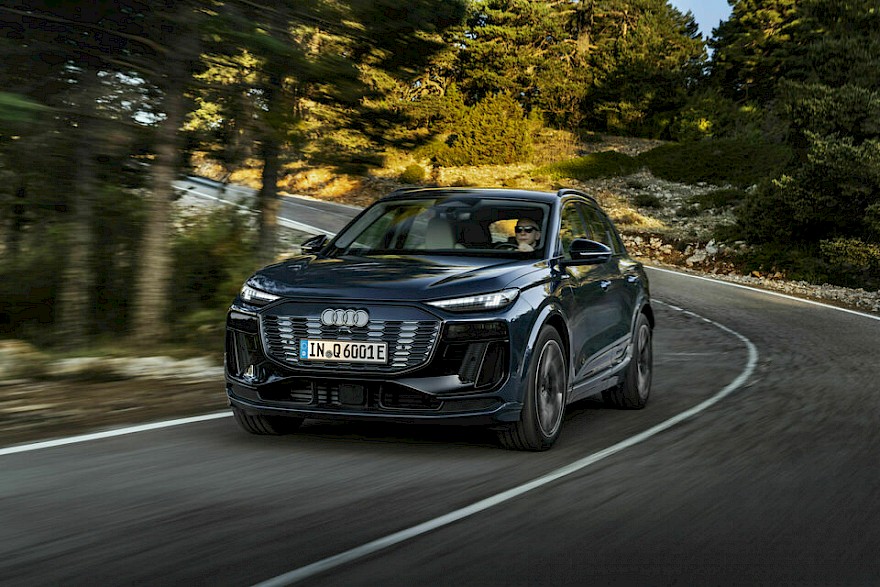
Powering the dual motors is a 100kWh battery pack (gross capacity) with 94.9kWh of usable capacity. The 12-module battery pack comprises of prismatic NMC 811 cells like the Macan EV which are nickel rich cells and have lower cobalt content that enhances the specific energy. The upside of the new nickel rich chemistry translates to more range. The standard Q6 e-tron can cover 625km (388 miles) while the SQ6 will cover 598km (371 miles) between charges, on the WLTP cycle. Additionally, the Q6 e-tron comes standard with a heat pump, making the vehicle more energy-efficient in winter by reducing energy consumption required to heat the cabin.
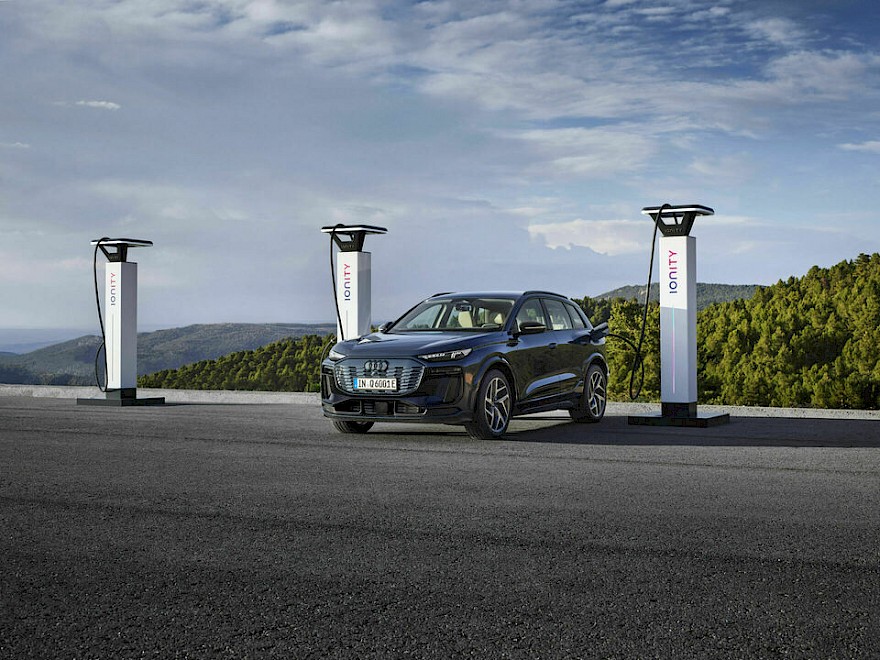
Employing an 800V architecture, the Q6 e-tron achieves 270kW of peak charging rate on a DC fast charger good for a 10-80% top-up of 21 minutes. On a Level-2 charger, the Q6 e-tron will achieve a peak rate of 11kW that is expected to take 8-9 hours. On a 7.2kW wall box unit, 0-100% top-up will take 15 hours. However, an 80% top-up will suffice for daily driving.
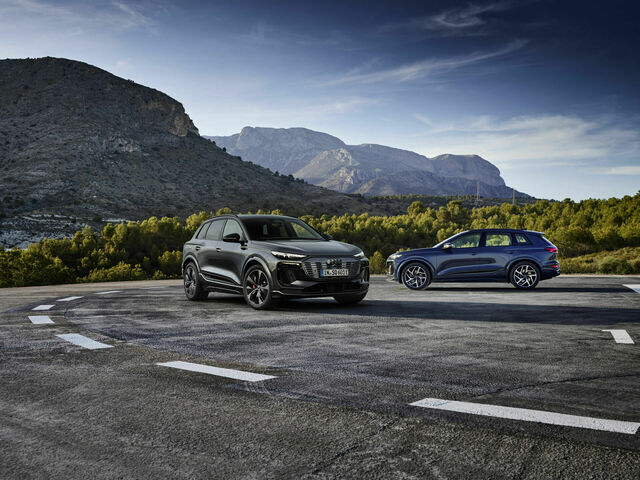
Launch and Pricing
The Q6 e-tron will hit US shores in late 2024 with an expected price range of $65,000-$70,000. It will go up against the likes of the Tesla Model Y Performance and Model X, Mercedes-Benz EQC, and the Jaguar I-Pace. Like all Audi EVs of the past, the Q6 e-tron promises to be a more practical EV and an underrated EV like the original e-tron. Although there are some shortcomings in the interior, the Q6 e-tron will make up for it with an impressive range of over 300 miles (480km) and excellent charging performance, making EV road trips more convenient. At launch, the Q6 e-tron will come with dual-motor version with the 100kWh battery pack. There will be a rear-wheel-drive version with a smaller 84kWh (gross) battery pack coming later.
In India, the Q6 e-tron is expected to arrive in showrooms in 2025, with an estimated price of around 1 crore. With the recent move to tax EVs at a lower 15% provided manufacturers commence manufacturing within 3 years, we could be in for a surprise. Possibly hinting at a starting price below a crore.
Image Source: Audi Media Center
For any inquiries or suggestions regarding the content, please feel free to reach out to us at jash@evlane.net






March 25, 2024
Category: